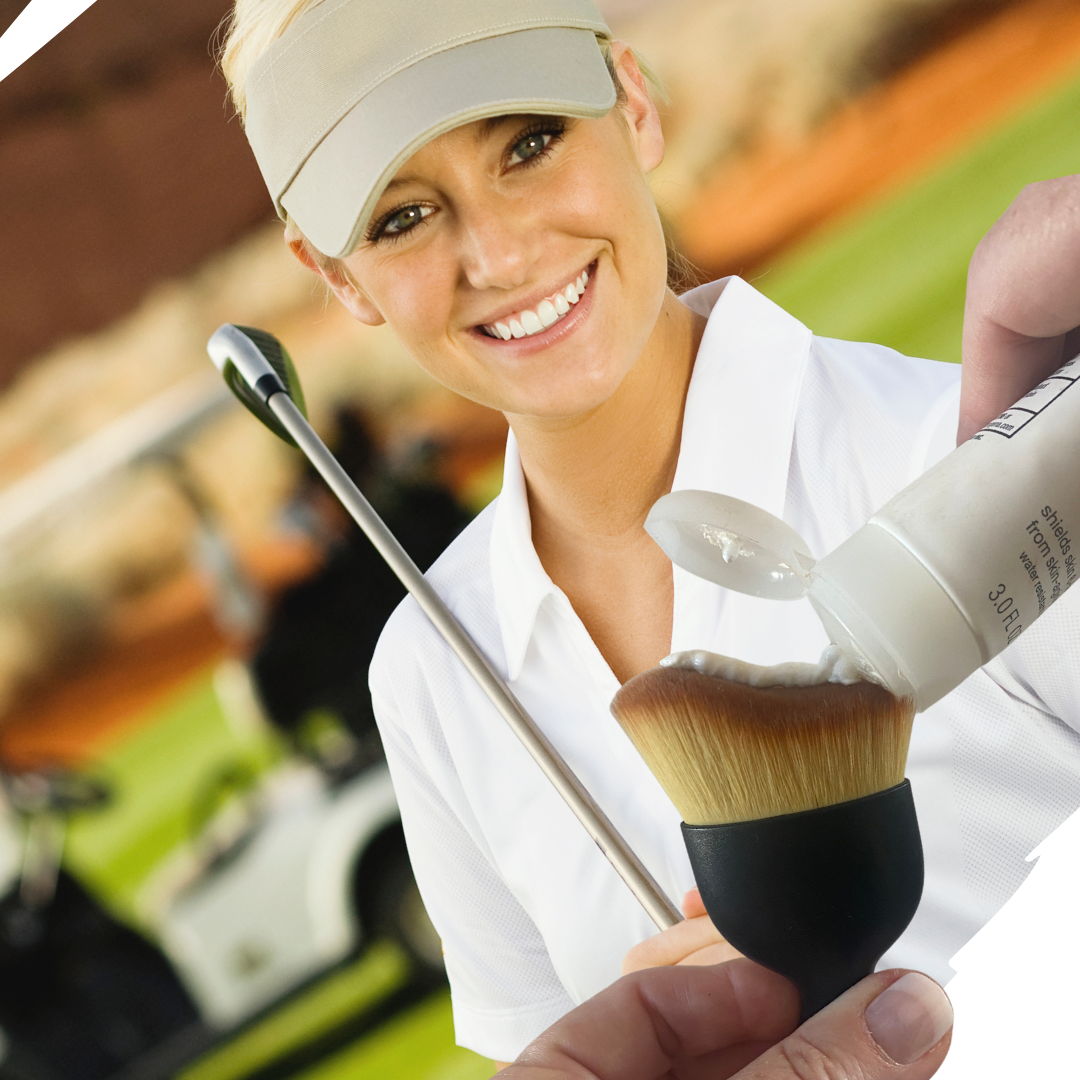Cover Me In Sunshine But Not Without Sun Protection.
Did you know that skin cancer is the most preventable cancer, with sun protection being the best prevention? More than 90 percent of all skin cancers are located on sun-exposed skin.
So while playing your favorite outdoor sport, from golf to tennis, it is critical to prevent sun damage with a broad-spectrum sunscreen with an SPF 30+ all year round. Using a handy sunscreen applicator can make it easy.
Sunscreen should be applied prior to going outdoors (shoot for a half hour before you head out) and don't forget to reapply every couple of hours ~ more often if it is sunny, or if you get wet swimming or perspiring. Even a water-resistant sunscreen should be reapplied every couple of hours.
Wearing sun protective clothing (like long sleeve shirts or sun sleeves), sunglasses, and a hat (with a 4" brim). Try your best to avoid sun exposure between 10:00 a.m. and 3:00 p.m. by planning outdoor activities early in the morning or late in the afternoon.
Everyone is at risk of getting sunburnt, so even those with a darker complexion should use sunscreen and other measures to protect their skin all year round. Skin cancers from sun exposure occur on all skin types, so sun protection is key.
Sun Protection is Important at Any Age
- Over 25 percent of your lifetime sun damage likely occurs during your childhood.
- Men over 40 spend the most time outdoors and get the highest annual ultraviolet rays.
- Harmful UV rays are more intense in the summer, at higher altitudes, and closer to the equator but don't discount their intensity during the cooler months either.
- Florida receives about 150 percent more UV light than Maine.
- Overexposure to the sun in one day can lead to sunburns.
- It takes only one sunburn to double your risk of skin cancer.
- Melanoma has been linked to sunburns in childhood.
- A sunburn at any age will increase your skin cancer risk and long-term exposure to sun is linked to all forms of skin cancer.
UVA vs. UVB
Some people think that sunscreen isn't necessary in the winter months because of a misunderstanding of how sun damage happens and what it looks like.
The sun emits both UVA rays and UVB rays, and they affect your skin in different ways as outlined below.
|
UVB |
UVA |
|
Think of UVB rays as the “burning” rays. |
UVA rays are the “aging” rays. |
|
UVB rays are responsible for short-term skin appearance damage like sun burns. |
UVA rays cause long-term skin appearance damage like wrinkles and sagging skin. |
|
UVB rays are linked to most forms of skin cancer. |
UVA rays are linked to some forms of skin cancer. |
|
UVB rays affect the upper levels of your skin. |
UVA rays damage the deeper levels of your skin. |
|
Because UVB rays cause burns, the SPF number on sunscreen is associated with UVB rays. The higher the SPF number, the more protection from UVB rays and sunburns. |
Only broad-spectrum sunscreen protects against both UVA and UVB rays. If a sunscreen isn’t broad-spectrum, then it doesn’t protect against UVA rays (in other words it doesn’t protect against wrinkles). |
|
UVB rays are weaker in the winter, which is part of the reason why you might not burn so often in winter. |
UVA rays are just as strong in the winter. So, while you may not get burned, the deeper levels of your skin may still be affected by the sun, causing free radicals, skin damage, and wrinkles. |
The most important thing to understand about UVA and UVB rays in the winter months is that if your goal is to avoid most forms of skin cancer and surface-level sunburns, then you have less to worry about in the winter as UVB rays are not as strong. But, if you want to avoid wrinkles, loss of skin elasticity, and some forms of cancer, which come from the deep-reaching, year-round UVA rays, then sunscreen in the winter is essential.

